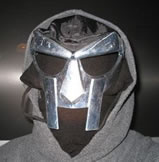Business note: With this review of what will probably be the most reviewed comic book this year, I introduct a new  post-tag, “Comics review.” If you’re looking for good stuff to read–or bad stuff to stay away from–you’ll be able to use that tag to find all the reviews I’ve done. I’m still using the “comic books” tag to separate out all comic-related posts, too, like the “Best Comics of the Decade” post I did with a bunch of other bloggers last year.
post-tag, “Comics review.” If you’re looking for good stuff to read–or bad stuff to stay away from–you’ll be able to use that tag to find all the reviews I’ve done. I’m still using the “comic books” tag to separate out all comic-related posts, too, like the “Best Comics of the Decade” post I did with a bunch of other bloggers last year.
Okay, so now for my review of Batman #700.
The good: Grant Morrison actually tells a story. Yes, it’s a little confusing at first, but it’s actually a story that makes sense and can be figured out if you hang with it, even if you don’t know everything that’s happened in Batbooks for the past three decades. In this regard, I think it’s a first for Morrison. In this regard, it’s also a perfect anniversary issue, because a lot of folks (like me) are going to be picking it up on that basis. (I don’t regularly read the Batman or Detective titles–I only read Morrison’s “Batman and Robin” title.) In fact, Morrison shows a winking self-awareness when Batman tells a confused Robin, “It’ll all make sense one day,” as they jump off a rooftop. Robin (Damian Wayne version) has a look of savage, unbridled glee as he leaps through his confusion. It’s ironic that with three of the industry’s most popular artists on the book, Scott Kolins has the best panel.
The bad: The story isn’t all that imaginitive, and it’s one you’ve probably read a dozen times in other books. Hell, you might have already read it in an old Batman comic. Still, it’s fun enough, and it gives Morrison the opportunity to write multiple characters. As much as I generally find him obtuse, one thing he is quite good at is establishing distinct characterizations in a few words. The characterizations of Joker, Riddler, Mad Hatter, etc., aren’t novel, but they are funny, interesting, and creative.
More good: It’s the first time we get to see David Finch’s interior D.C. art. And it’s on Batman, the Finchiest D.C. character of them all. And we get to see a Frank Quietly story as well, who is easily the best translator of Morrison’s nebulous scripts. Which brings be to . . . .
More bad: Quietly only draws the first 2/3 of his story, with Scott Kolins finishing it. I’m not giving much away to tell you that the book takes place in three different time periods (but doesn’t have anything to do with the current time-skipping Bats is doing in “The Return of Bruce Wayne”), and one of the ways that the time jumps are displayed is through the use of multiple art teams–one for each version of Batman. When Quietly’s story is broken up, it greatly impairs this narrative device. I wonder if there’s an interesting backstory here, or if Frank just couldn’t get it together to finish up.
More good: It’s fun to see Morrison’s visions of Batmen of the future.
More bad: The stories of each Batman are so short that the vision is never really completed. Morrison’s talent lies in creating worlds and visions, but his weakness is that he needs a lot of time to spread out. He’s a long-form storyteller, and this is a one-and-done. Perhaps that is why the best actual story in Batman #700 is the first one, involving the current Batman (Dick Grayson) and Robin (Damian Wayne)–they’re the characters he’s writing about on a monthly basis.
More good: The “art gallery.” In the ’70s, Marvel called these pages “pin-ups.” Yeah, they’re filler, but in BM#700 we get to see, among others, the likes of Dustin Nguyen, Tim Sale, and one of the most influential comic artists of the last century: Bill Sienkiewicz.
More bad: More filler. A completely useless 4-page map of the Batcave and a 5-page “preview” (advertisement) for the upcoming Neal Adams Batman project. Yeah, of course it looks good. It’s Neal Adams. But you’re charging me five bucks for a comic–don’t screw with the content by making me subsidize your promotions.
Final verdict: Buy it. The pluses outweigh the negatives by a lot. If you read this and don’t have fun, you just don’t like comic books.

